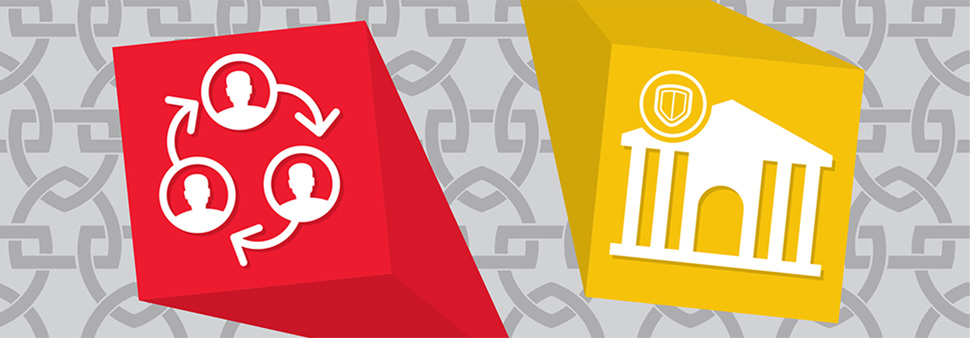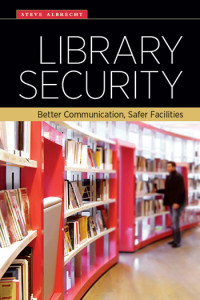
When I ask library people, “Who is in charge of safety and security for your library?” the most common answer is, “The police department or sheriff’s department.” Some people will say, “The library director,” and a few brave souls will give me the correct answer: “Everyone who works here and even the patrons.”
Safety and security are everyone’s jobs. This includes the library director, every department head, every supervisor, all full- and part-time employees, library board members, Friends of the library members, elected officials, and even patrons—who can and should tell us about safety or security concerns when using our branches.
Safety and security themes
Facility safety and security are big responsibilities and important ones; we’re talking about people’s lives here. Crime, conflict, and violence are real possibilities, so it helps to have some absolutes when it comes to our methods and approaches to keeping staff members and patrons safe. I suggest these five:
- We will treat all patrons with respect, even and especially when we disagree with their behavior. We will accept all patrons, without having to accept their inappropriate behaviors.
- We won’t tolerate crimes, threats, or acts of workplace violence. We won’t wait for events to make smart security improvements. Security and safety at our facilities is a work in progress.
- There should be consequences for patrons who violate the law, our codes of conduct, and our safety and security policies.
- We will offer support and assistance for every employee and every patron who asks for or needs help with safety or security concerns, including bringing in law enforcement.
- As to our work culture, we will agree that asking for help does not mean employees don’t know how to do their jobs with patrons; it just means they need help at that moment. And we will ask all staffers to do their jobs safely, not just do their jobs.
Degrees of alertness
When you’re watching out for one another and keeping safety in mind, you are in what I call Condition Yellow. This refers to your ability to pay attention to your safety and security anytime you’re on the library floor, in the stacks, at the service desk, in transit between the floors of your facility, entering or leaving your facility, or in view of or in contact with the public. Condition Yellow represents an everyday level of alertness, but you must keep in mind the other two security levels: Condition White and Condition Red.
Condition White is best viewed along a spectrum. It serves its purpose when you are on a break, in a safe back office, eating your lunch, chatting with colleagues, or behind the scenes and otherwise not actively engaged with patrons or strangers. Condition White means relax, catch your breath, and energize to finish the day. The other end of the Condition White spectrum is when you are caught unaware by a situation or a patron’s behavior because you weren’t paying attention and didn’t consider the possibility that he or she would erupt. The operant phrases for the not-good Condition White are: “What just happened?” “I didn’t see that coming.” “I was caught off guard.”
Condition Red gives you two choices: get out of the dangerous situation immediately or, if necessary, protect yourself by fighting back. I prefer the first to the second—as I’m sure your supervisor, library director, human resources representative, municipal attorneys, and joint powers insurance carrier do as well—but I’m not discounting the need to protect yourself physically. Many people have done brave and heroic things to protect themselves when faced with violence and lived to tell about it, even if they originally had thought they never could.
Three core values for a safer workplace
Three elements can keep you safer (and saner) while you interact with patrons.
Self-protection. You can’t take care of others if you’re not safe yourself. When working around people you don’t know, it makes good security sense to stay at least an arm’s length away until you feel more comfortable coming closer. When people feel crowded, they often react with anger. Give people their space, especially if you see that they are starting to get upset.
Read situations with angry or entitled patrons by examining their tone, facial expressions, and body language for signs that they feel embarrassed, humiliated, or disrespected; maybe there are no good solutions or you see escalating anger or sudden rage. In these events, their next response could be to use violence. If that happens, you have every right to disengage, physically leave the situation, and get help.
You can’t just walk away if a patron raises his or her left eyebrow at you, but you are under no obligation to stand at your desk or on the library floor and wait to be assaulted either. Justify why you left to get help after the situation has stabilized.
Anger management and stress management. When it comes to dealing with difficult or challenging patrons, who may use mean words to try to degrade you, your job, or your efforts, always remember QTIP: Quit Taking It Personally.
Most of the time, angry, or entitled patrons aren’t mad at you personally; they’re mad at what you represent—a public space entity with rules, a code of conduct, and policies they find irritating, chafing, or not meant for them. They don’t have the right to abuse, threaten, or harm you, but you will have to use patience, perspective, and customer service skills when dealing with them.
Working smart. You must know what to say, what to do, when to stay or go, whom to call, and how to get help when dealing with challenging patrons. Most times you can use good communication skills to solve a patron’s problem; sometimes you just need to get another employee or supervisor with a different approach.
Getting help isn’t a bad reflection of your customer service skills. Think about the concept of “the right person for the right patron in the right situation at the right time” as an alignment of sorts. Human beings align and connect with one another for a variety of reasons, including race, age, gender, religion, country of origin, neighborhoods, hobbies, and lifestyles. You can use this to your advantage in service situations by trading off with one another based on who gets along best with the approaching patron.
You’ve certainly seen this many times: A patron comes in who seems to like you but hates your coworker. Or here comes the patron who can’t stand you, and tells you so, but he or she seems to connect with your colleague in a way that’s a clear signal for you step away and let them interact. Once you and your colleagues recognize these alignments, you can trade off so that an employee works with certain patrons who align with him or her best. It’s not always possible to do this, but when it is, you can choose to go with a patron’s flow instead of trying to swim upstream.
A key component of working smart is the ability to document bad behavior, using an informal memo or email to your boss or a more formal approach, like filling out a security incident report.
Here’s one example where after-the-fact documentation can help protect your professional reputation: You are speaking on the phone to an increasingly angry patron who starts cursing at you. You warn him that he can’t speak to you this way and tell him that if he continues, you’ll hang up. If he keeps cursing, keep your promise and hang up. Take a few stress management breaths and then document the conversation, including the actual curse words verbatim.
When this type of patron calls back to complain to your supervisor or shows up in person to meet with your library director, he or she is often wearing a shiny halo and a set of tiny angel wings. This is what the director will hear: “I’ve never been treated like that in all my years!” or “I was shocked, insulted, embarrassed, and now I’m thinking of speaking to my lawyer.” It’s important to depict accurately exactly what the person said to help your boss justify why you did what you did.
Posting and enforcing codes of conduct

I say this with love in my heart, but after having looked at dozens and dozens of code-of-conduct rules from libraries across the US, my conclusion is that many of them sound like they were written by city attorneys and not by true library people. The language is stilted, stiff, and almost biblical. (“Thou shalt not consume thy foods in said building.”) This is hardly surprising since much about compliance with policies, especially in government, is derived from advice from our legal friends.
What’s best is a patron-friendly code of conduct written so there are no gray areas about what you can and can’t do in the library. It should be firm but not sound so legalistic that patrons get a little mad by the time they’re done reading it.
I’m always puzzled when library directors or library employees tell me they have behavioral problems in their libraries and yet the only place to find the code of conduct is on a clipboard behind the circulation desk (which no patron has ever actually asked to read) or on the library’s website.
Having your code of conduct posted in several highly visible places throughout your library is an important first step toward ensuring continued patron compliance. Hiding these important rules from view is a mistake because it allows patrons to fall back on standard answers about noncompliance: “No one ever told me.” “I didn’t know I couldn’t do or say that.” “Other people are doing the same thing.” “I’ve been coming here for a long time, and I always thought I could do this or that.”
I’m a big believer in putting the rules of library conduct on large posters that are visible near the entrance and other common areas. I also like changing the language from negative to positive.
“No cellphone calls in the library” should be rewritten as “Please take your cellphone calls outside.” “No eating or drinking in the library” can be recast as “Please enjoy your food and beverages before you come inside.” You will get better compliance from patrons and create a more welcoming atmosphere by using positive language instead of negative rules.
This is an excerpt from Library Security: Better Communication, Safer Facilities, by Steve Albrecht (ALA Editions, 2015).



